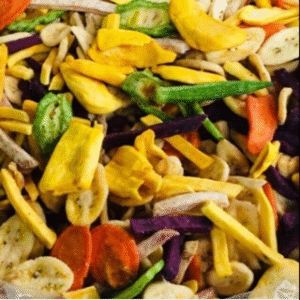Last updated on February 21st, 2025 at 03:34 am
Introduction
If you’re a coffee enthusiast, there’s nothing quite like the bold, smoky flavor of a dark roast coffee. Roasting your own coffee beans allows you to customize the roast to your taste preferences, and it’s easier than you might think. Whether you’re aiming for a rich, full-bodied dark roast or a more delicate flavor, understanding the roasting process is key.
In this blog post, we’ll guide you through the essential steps for roasting coffee beans to perfection, focusing on how to achieve that bold, smoky dark roast flavor. We’ll cover everything from selecting the right beans to the roasting techniques that give you the best results.
Why Choose Dark Roast Coffee?
Dark roast coffee is known for its rich, bold flavor, often with notes of chocolate, smoke, and a slight bitterness. The roasting process enhances the natural oils in the beans, giving them a shiny appearance and a full-bodied taste. There are several reasons to choose dark roast coffee for your morning brew:
- Stronger Flavor: Dark roasts bring out the rich, bold flavors of coffee beans, perfect for those who enjoy a more intense cup.
- Low Acidity: Dark roasts are less acidic compared to lighter roasts, which makes them easier on the stomach for some coffee drinkers.
- Smoky and Rich: The longer roasting time caramelizes the sugars in the beans, resulting in a smokier flavor and a satisfying aftertaste.
Data Insight: The roasting process is a chemical reaction known as the Maillard Reaction, which occurs between 150-200°C (302-392°F). This process brings out the full flavors of the coffee beans.

How to Roast Coffee Beans for a Dark Roast
Roasting coffee beans at home is a fun and rewarding process that allows you to have complete control over the flavor. Here’s a step-by-step guide on how to achieve that perfect dark roast flavor:
1. Choose the Right Beans
The first step in roasting coffee beans is to choose the right beans. While you can use any type of coffee bean, those with a medium to low acidity typically work best for dark roasting.
- Best Beans for Dark Roasting: Opt for beans such as Brazilian, Indonesian, or Sumatra, which have a fuller body and lower acidity—ideal for dark roasts.
- Green Coffee Beans: Use unroasted green coffee beans for the freshest and most flavorful roast.
Pro Tip: You can find premium green coffee beans from suppliers who offer a variety of origins, each with distinct flavor profiles, perfect for dark roasts.
Explore our selection of roasted coffee beans: Vietnamese Roasted Coffee Beans Espresso
2. Prepare Your Roasting Equipment
To roast coffee beans, you can use various methods, including a coffee roaster, popcorn machine, or even a frying pan. Each method offers different results, but the general principles remain the same.
- Coffee Roaster: A dedicated coffee roaster is ideal for consistency and control. It allows you to maintain precise temperatures and even roasting.
- Popcorn Machine: A hot air popcorn machine works well for home roasting, as it circulates hot air around the beans for even roasting.
- Pan Roasting: If you don’t have access to specialized equipment, you can use a heavy frying pan to roast small batches of beans.
Pro Tip: A coffee roaster is the best choice if you plan to roast coffee beans regularly, as it gives you the most control over the process.
3. Preheat Your Equipment
Before adding the coffee beans to your roasting equipment, make sure it’s preheated to the appropriate temperature. For a dark roast, you’ll need to reach temperatures around 450°F (232°C).
- For a coffee roaster: Set it to a high heat setting.
- For a popcorn machine: Preheat it for a few minutes until it reaches the required temperature.
- For a pan: Heat the pan over medium-high heat for several minutes before adding the beans.
Pro Tip: Consistent heat is key to getting that perfect dark roast. If your temperature fluctuates too much, the beans may roast unevenly.
The Roasting Process: Dark Roast
Roasting coffee beans involves carefully monitoring the temperature and the time the beans spend in the roaster. For a dark roast, you’ll need to go through a couple of stages:
First Crack (Medium Roast)
As the beans heat up, they will begin to make a cracking sound. This is called the first crack and indicates that the beans have reached medium roast level. The beans will be light brown and have a fruity aroma.
- First Crack Temperature: Around 385°F (196°C).
Second Crack (Dark Roast)
For a dark roast, you’ll want to continue roasting the beans past the first crack until you reach the second crack, where the beans will start to darken and take on a shiny appearance. This is the sweet spot for dark roasting, where the beans develop their characteristic smoky, bold flavor.
- Second Crack Temperature: Around 435°F (224°C).
- Duration: For a full dark roast, continue until the second crack is audible, but don’t let the beans burn.
Pro Tip: The beans will keep cooking after you remove them from the heat, so it’s important to stop the roasting process just before they reach your desired darkness.
Explore more about coffee roasting: Coffee Roasting Process Guide
4. Cooling the Beans
Once you’ve reached the desired roast level, it’s time to cool the beans quickly to prevent further roasting. The best method is to spread the beans on a baking sheet or a cooling tray, where they can cool rapidly.
- Cool Beans: Stir or shake the beans to ensure they cool evenly.
- Cooling Time: Let the beans cool for 5-10 minutes until they reach room temperature.
Pro Tip: Avoid letting the beans sit in the roaster after roasting is complete, as they can continue to cook from residual heat.
How to Brew Your Perfect Dark Roast Coffee
Once your beans are roasted and cooled, it’s time to brew them! Here are some tips to get the best flavor from your dark roast coffee:
1. Grind the Beans
The grind size for your coffee should match your brewing method. For a dark roast, a medium to coarse grind is recommended for methods like French press, while espresso machines require a fine grind.
2. Brewing Method
The most popular methods for brewing dark roast coffee include:
- French Press: Ideal for a full-bodied, rich cup.
- Pour-Over: Great for extracting smooth, flavorful coffee.
- Espresso: Best for strong, concentrated shots.
Data Insight: Brewing at 200°F (93°C) for 4-5 minutes will extract the most flavor from dark roast coffee.
Learn more about brewing with roasted coffee: How to Choose Roasted Coffee Beans for Automatic Machines
FAQ Section
1. What makes a dark roast coffee different from other roasts?
Dark roast coffee is roasted longer at higher temperatures, which brings out bold, smoky flavors. The longer roasting process reduces the acidity, making it smoother.
2. How long should I roast coffee beans for a dark roast?
For a dark roast, you should roast your coffee beans for about 10-12 minutes after the second crack, depending on the heat and the equipment.
3. Can I roast coffee beans in a home oven?
Yes, you can roast coffee beans in a home oven, but it requires constant monitoring and turning of the beans for even roasting.
4. How do I store roasted coffee beans?
Store roasted coffee beans in an airtight container, away from light, heat, and moisture. Beans should be consumed within 2 weeks of roasting for optimal freshness.
5. How do I know when my dark roast is perfect?
The key is to listen for the second crack and stop roasting right before the beans become too dark or start to burn. Beans should be dark brown with an oily sheen.
Conclusion
Roasting your own coffee beans gives you the freedom to craft a perfect dark roast that suits your taste preferences. By understanding the roasting process and carefully selecting your beans, you can achieve a bold, smoky flavor that will elevate your morning cup of coffee. With the right tools, techniques, and a bit of practice, you’ll be able to enjoy freshly roasted coffee in the comfort of your own home.
For premium roasted coffee beans sourced from Vietnam, check out these links:
Start roasting your perfect dark roast today!








